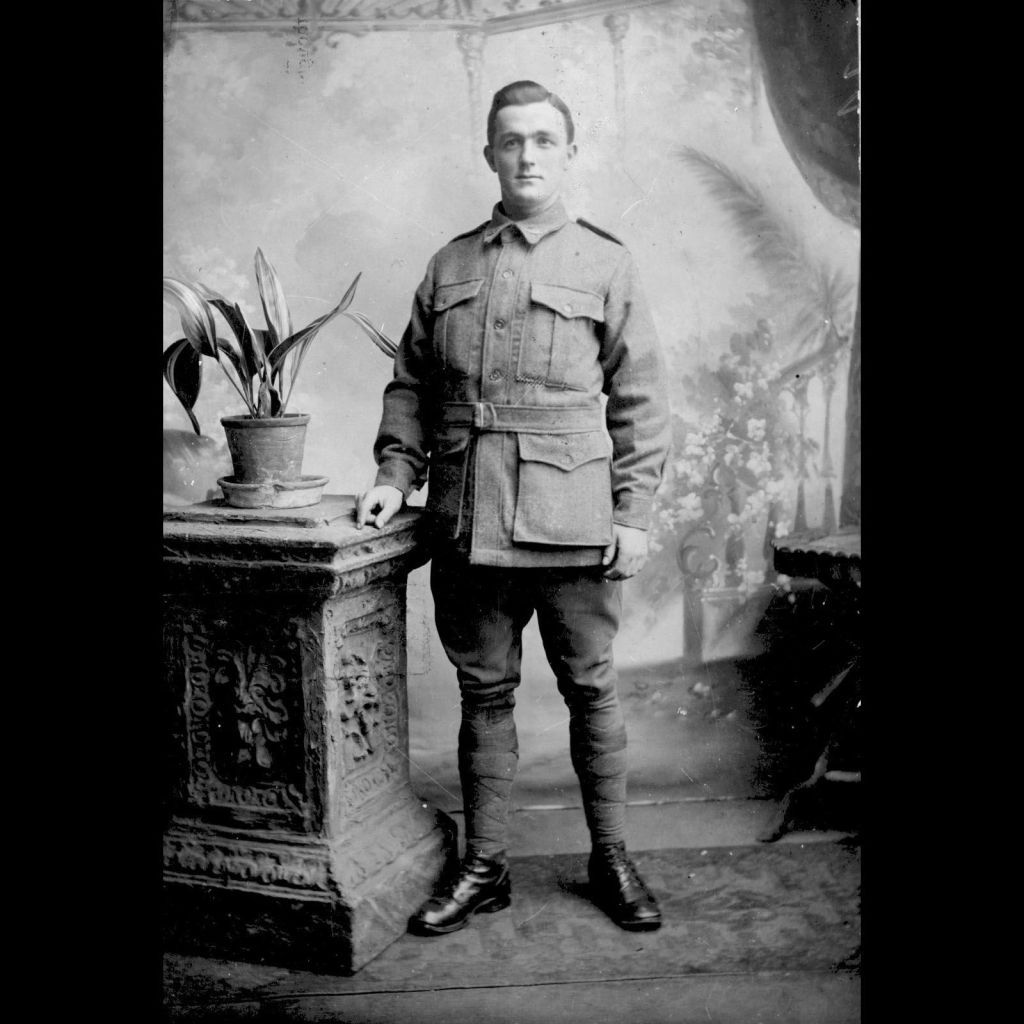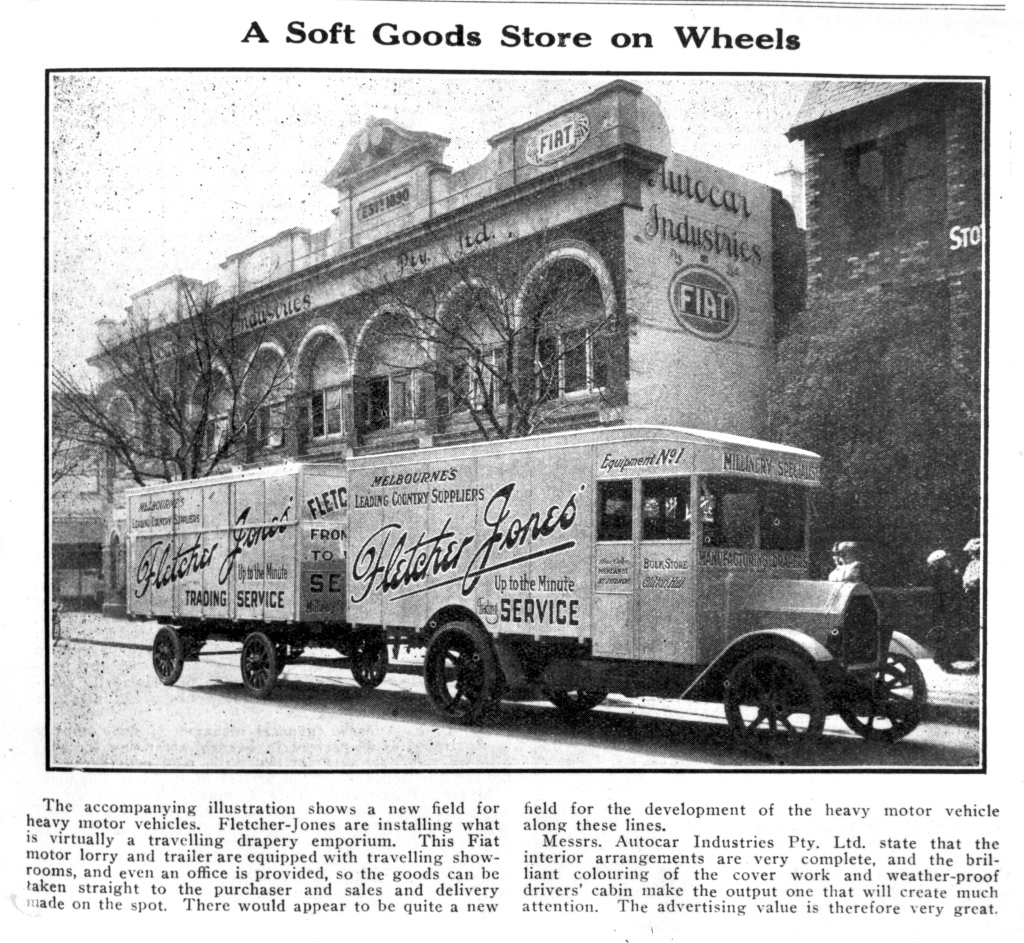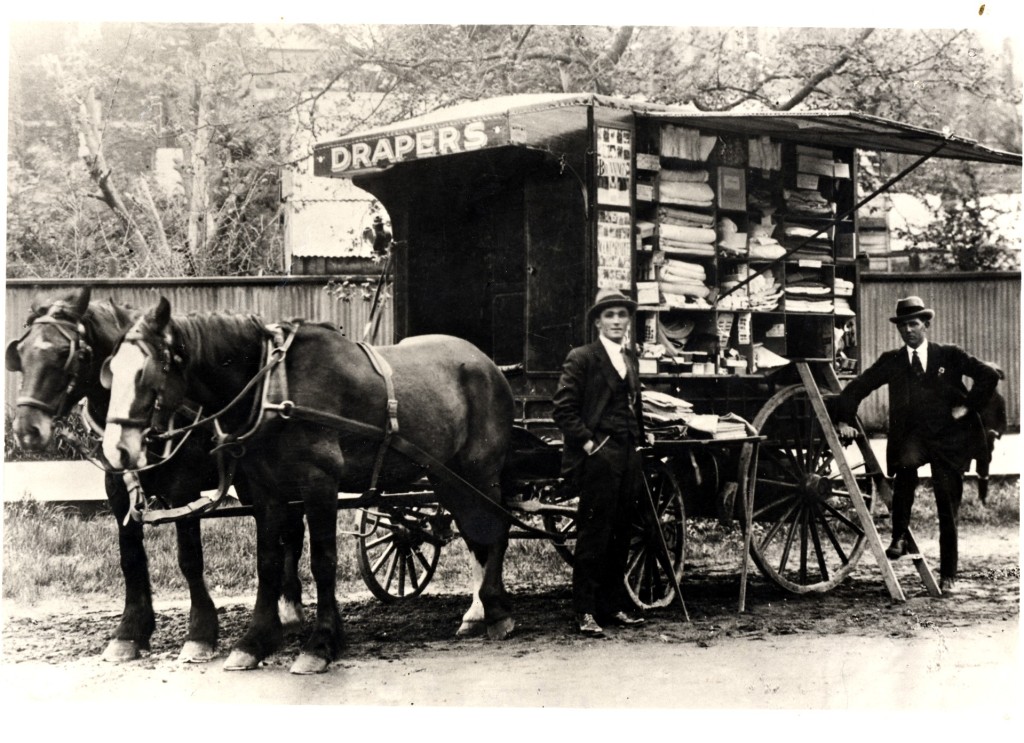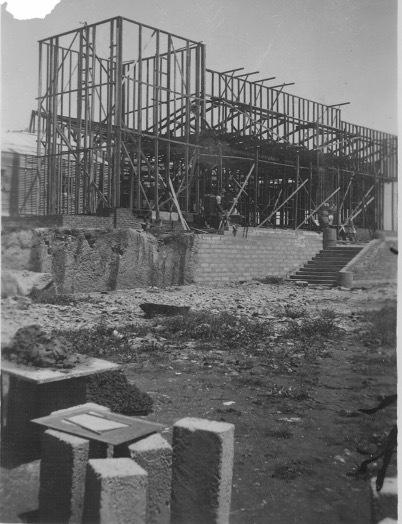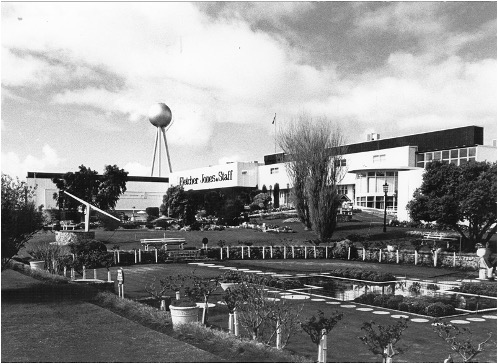Have you ever had to start from SCRATCH at a new place?
What was it like for you?
Being resourceful and adaptive is part of the the Fletcher Jones story. It was after World War I that Fletcher Jones found himself having to start a new chapter of his life.
Neil Symons, Chairman of Fletcher Jones and Staff Pty Ltd, recalls this period as follows:
“I remember vividly, two years after joining in 1917, Fletcher Jones was discharged from the Australian Imperial Force after suffering critical injuries. He refused to accept a war pension after being discharged and went to work as a door-to-door salesman in the suburbs of Melbourne.”
“Later, he met his old army friend Stan Clapton, and the two established Clapton and Jones, a hawker business in rural Victoria […] selling on farms and in towns until 1924. Living the peddler’s life was perhaps the ideal way to regain health and strength, but this young Fletcher Jones was eager to embark on a more worthwhile and rewarding mission.”
Making the Impossible, Possible
“Looking at the buildings now, it’s hard to imagine that they could be brought together into a coherent design. I think Mr. Jones’ confidence and foresight, Tag Walter’s ‘know-how’ and Charlie Ryan’s practical experience were able to accomplish wonders.”
Arthur Browne, former staff of the Fletcher Jones Factory
After selling garments from small hawking trucks to small shops, Fletcher Jones moved on to build the FJ brand, which quickly became incredibly popular and soon enough a factory had to be built.
In 1947, Fletcher Jones chose a former quarry site on Flaxman Street as the foundation for the new factory. The quarry was considered an eyesore but a friend of Fletcher Jones, Ted Baker, christened the site Pleasant Hill and the name stuck. Leslie (Darby) Boucher, Fletcher’s brother-in-law created the gardens with artistic help from local architect Tag Walter.
However, a lack of building materials as a result of WWII made it incredibly challenging to establish a factory.
In the face of these crises, Fletcher Jones acquired and adapted a number of war surplus structures to build his Factory and Gardens.
“To be honest, I really enjoyed attending Army disposal sales and bought all those materials. We purchased 17 buildings in total from Camp.”
Mr. Fletcher Jones
The curved roofed Quonset Hut was one of the noteworthy elements of the use of repurposed structures in the Fletcher Jones complex. The Quonset Hut was bought in 1949 and used to house a dry cleaning plant and alterations department.


The factory was altered and expanded multiple times between 1951 and 1974. This can be seen in the changing facades of the building.
All of the changes were a response to the changing demands of the market place and needs of the factory.
“The ‘heritage’ of Fletcher Jones is far more profound than the preservation of particular buildings or bits of building; its about a vision, an ethos, and a business ethic […] We did not ever regard Pleasant Hill infrastructure as ‘precious’. Were we wrong? My father would say – ‘Hats off to the Past; Coats off to the Future’. He would be correct.”
– David F Jones – 2005 –
One of the structures in these Gardens was made from aeroplane anchors and heavy airways concrete blocks.
“Aeroplane anchors and heavy airways concrete blocks proved ideal as a base for our front fence in Flaxman Street. It is probably the strongest fence in Australia.’”
Fletcher Jones, Not by Myself, 1956
Can you guess where it is?


You are standing right next to it!
Fletcher Jones himself wasn’t alone in his resourcefulness during difficult times. Let’s listen to one of his staff, Gaetano Remine, who migrated all the way from Italy for this job.
“We were all tailors, all Italians, we didn’t know anybody. We were our own family… We were young, hungry with money, because we came with nothing. I came to Australia with one suitcase… I’ve been very lucky, very lucky to work in a company like that.”
Gaetano Remine, a tailor from Italy and Fletcher Jones employee 1961-1987
Let’s talk about your story now.

